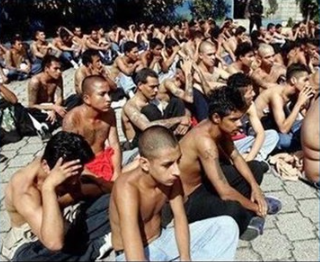Study on Central American gangs finds rehabilitation possible

"Life in the gang is a miserable life. One starves, cries alone and still can't leave. Anywhere one goes, one can be killed." – Gang member in El Salvador.
For members of the notorious Salvadoran street gang known as MS-13, the mara – gang – provides protection, respect and a sense of belonging. Completing a stint in prison is a kind of "graduation'' for gang members.
Forging a life outside the gang, however, is a difficult – and dangerous – process.
To better understand the nature of youth gangs in Central America and how members are able to leave the gang – a process known as "desistance" – FIU researchers surveyed nearly 1,200 current and former gang members in prisons, juvenile centers and rehabilitation programs in El Salvador.
"The reasons for joining a gang have not changed in the more than 20 years I've been doing this research,'' said Jose Miguel Cruz, director of research for the Kimberly Green Latin American and Caribbean Center and lead investigator of the study.
"However, what we found is that nearly 70 percent of the gang members want to leave. They feel imprisoned, trapped. They are in a very vulnerable position, with threats to themselves and to their families.''
Central American gangs – and particularly MS-13 – are among the most violent in the world. One of the largest and most highly organized, MS-13 – or Mara Salvatrucha – is also active in major U.S. cities, including Los Angeles, New York and D.C. President Donald Trump has singled out MS-13 as one of the nation's top gang threats.
Understanding gang life is essential to helping gang members who want to leave, said Jonathan Rosen, a research scientist with the Jack D. Gordon Institute for Public Policy, who conducted dozens of in-depth interviews with current and former gang members in El Salvador.

"The gangs provide what family doesn't,'' he said. "They believe they are in the gang for life. They say they will end up in prison, in a hospital or they will die.''
"The New Face of Street Gangs: MS-13 and the Gang Phenomenon in El Salvador" – is the first study of its kind conducted by a U.S. university. Along with FIU President Mark B. Rosenberg and LACC Director Frank O. Mora, Cruz and Rosen presented their findings recently during an event at FIU in DC.
Contrary to a popular misconception, the study found that exiting a gang is possible – through negotiation with gang leadership and the involvement of religious or non-governmental organizations that can provide a safe space for former gang members.
Training, education and job opportunities are critical components to successful rehabilitation from gang life, Cruz said.
"The number one issue is lack of job opportunities,'' he said. "They may know how to operate a weapon but otherwise, they have no skills, no training,'' he said. "And people have seen photos of MS-13 members with tattoos all over their faces. Who is going to hire them?"
A gang rehabilitation program run by League Collegiate Outfitters in Central America has been successful, Cruz said, because it offers former gang members a protective environment, as well as employment, educational opportunities and tangible support.
The results of FIU's research can better inform future policy decisions in the U.S. and Central America, said Cynthia Arnson, director of Latin American Programs at the Woodrow Wilson International Center for Scholars, who participated in a panel discussion on the study.
"This is remarkable research and the kind of intensive field work that is necessary to design successful policy interventions,'' she said. "It breaks my heart to see the level of violence that continues today as the result of unintended consequences of policy decisions."
More information: The New Face of Street Gangs: The Gang Phenomenon in El Salvador: lacc.fiu.edu/research/the-new- … final-report_eng.pdf
Provided by Florida International University

















